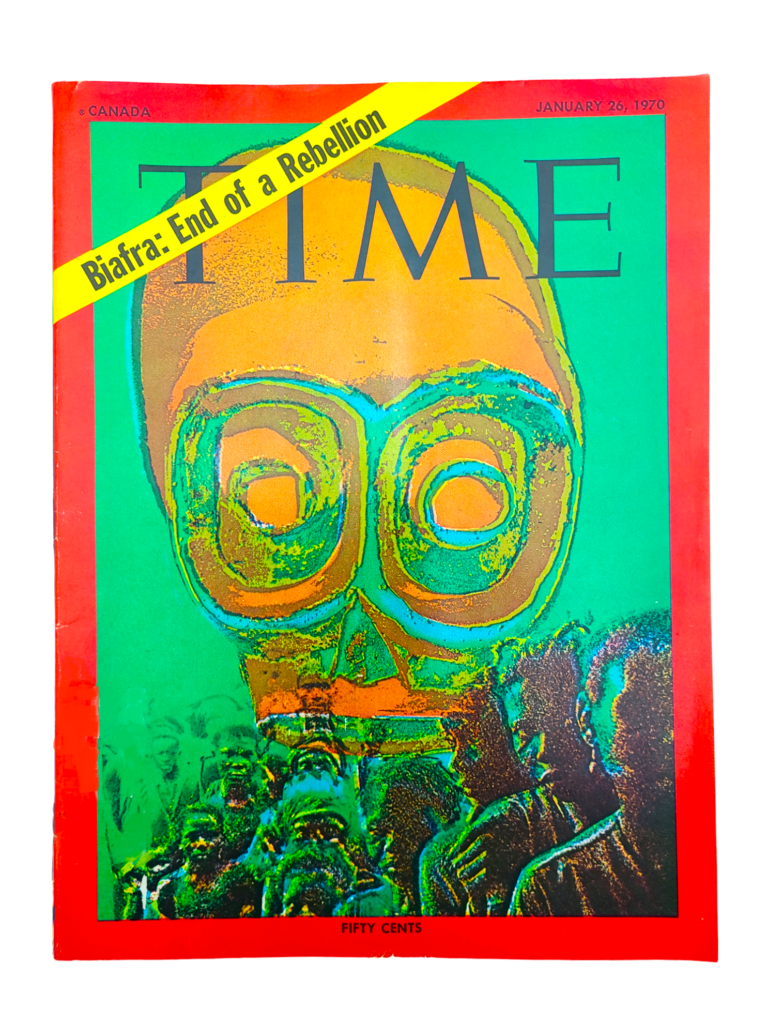This week we go back in TIME to January 26, 1970 when Nigeria was beginning to recover after a civil war, M.A.S.H was in theatres, tie-dyes were high fashion and the Kansas City Chiefs were Superbowl champions. I guess some things have changed and some things remain the same.
Civil War in Nigeria
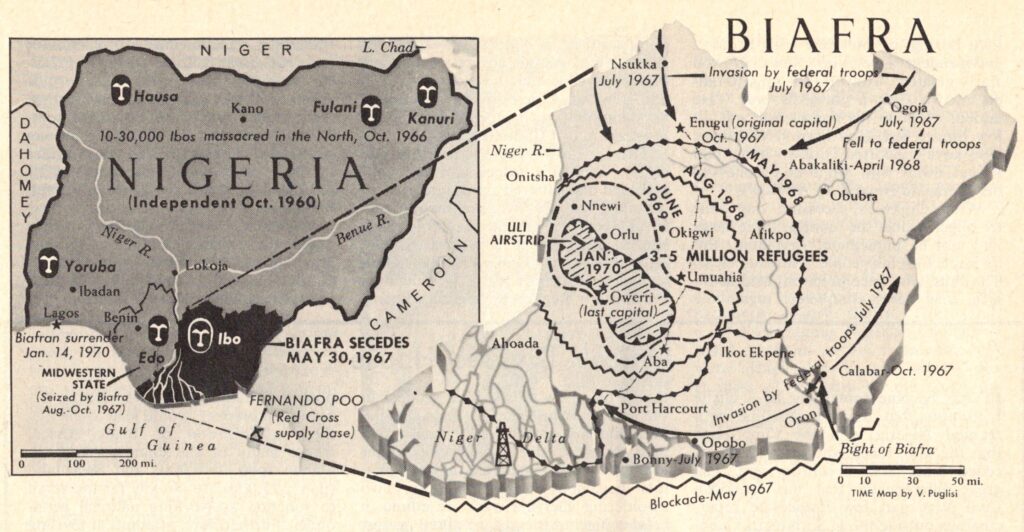
In the late 1960’s Nigeria experienced a brutal 31-month long civil war with the breakaway Eastern region of Biafra. Nigeria’s civil war was the first big war since African colonies started to gain independence. Many regions of Africa still had strong tribal allegiances, but the creation of new borders and nations didn’t mesh with these previously held tribal territories. In Nigeria, Major General Yakubu Gowon, Nigeria’s head of state and commander was making an effort to reorganize the country and break the tribal groups by further dividing regions within Nigeria. For example, an area dominated by the Ibo was divided into three regions. The result was that in two of the new regions the Ibo became minorities.
Led by Ibo General Chukwuemeka Odumegwu Ojukwu, Biafran rebels gathered to fight for secession from Nigeria. Many members of the Nigerian military were Ibo and at the outset of the civil war they left to join the rebels. This initial influx of trained military personnel helped the rebel forced get off to a strong start in the early days of the war.
On the Nigerian side this departure was a significant setback for Gowon. He lost 50% of his officers and 75% of his administrative staff before they even began to fight. As a result, in 1967 Gowon had to focus much of his efforts towards rebuilding the Nigerian military. Once fighting began there were other initial setbacks. For instance, many Nigerian soldiers refused to fight at night because they were afraid of juju (evil spirits).
In early 1968 Gowon had sufficiently rebuilt his army and his superior troop numbers started to lead the federal forces to win some important battles. Eventually they would landlock the rebel forces which restricted their access to supplies. Ojukwu was left with a single section of highway that he converted into a makeshift airstrip for supply drops.
Of course, this wasn’t simply an internal Nigerian conflict. Many outside nations had an interest in the outcome of the Nigerian civil war. Amongst the many motivations to interfere, the result of this war could set a precedence and inspire actions by other groups across the continent. Both sides of the conflict received weapons, ammunition, food and other supplies that very likely prolonged the war and potentially caused much more suffering.
France’s Charles de Gaulle was concerned that if Nigeria became too powerful, then it would be an example to former French colonies like Niger and Chad. Therefore, France backed the Biafrans during this conflict and provided necessary supplies to back their rebellion. The Biafrans were also supported by South Africa, Rhodesia and Portugal. These nations had an interest in preventing Nigeria from realizing it’s potential as one of Africa’s most powerful nations. Catholic and Protestant relief agencies worked to create a network of airplanes in order to provide supplies to Biafrans. This relief air force operated against Gowon’s protests that they were causing the war to be prolonged and that they were violating Nigerian airspace.
The British were concerned with helping Nigeria maintain it’s nationhood while also securing their own oil interests. Therefore, they provided support to the Nigerian forces. In addition, the Soviet Union wanted to gain influence in Africa and they saw supporting Nigeria by supplying weapons as a means to accomplish their goals.
During the conflict Ojukwu placed a primary importance on resupply of weapons and ammunition to support his war efforts. However, his troops were so weak from hunger that eventually they were no longer able to fight effectively. Hunger was very likely the driving force behind the rebel military’s defeat. As the situation continued to get worse, many Biafrans deserted through gaps in the military lines.
When Ojukwu realized that he had lost, he took his family, three aides and tons of luggage as he fled in one of the last outgoing flights from his highway airstrip. He also departed with bank accounts in London and Zurich to soften the blow of his military loss. This isn’t the first conflict we have reviewed and it is starting to look like a pattern where the losing leader flees to a comfortable exile while the people are left with the devastation of war.
With the departure of Ojukwu, the Republic of Biafra ceased to exist.
When the war was concluded, aid workers found that many Biafrans had not eaten for eight days. In some areas, up to two thirds of the population was suffering from malnutrition. Many of whom were children. This TIME article reports that as many as 1,000 children died in a single day.
Prior to the Nigerian civil war, the Biafran population was approximately 12 million. About 8 million were Ibo and the rest were made up of minority tribes. By 1970 as many as 2 million Biafrans had died and the majority passed away from starvation. The end of the war didn’t bring an immediate end to the suffering. There were still more than a million Biafrans who were at risk of death due to starvation.
One would think that the Nigerian government would try to immediately put every effort towards the preservation of life. However, Gowon sought to punish those who aided the Biafrans during the war. He prohibited many aid agencies and nations from supplying food or money to help the starving Biafrans. There was also a report of tons of food being stockpiled in an area close to the war zone while people suffered.
In the aftermath of the war, Gowon faced the task of preventing another rebellion. In 1970 he was considering a move to further divide Nigeria from 12 states to 16 in an attempt to increase the focus towards political parties and away from tribal allegiances.
Nigeria needed to tackle the difficult job of rebuilding. The civil war had decreased imports to Nigeria and caused food prices to increase dramatically for everyone. The East was specifically devastated by destroyed infrastructure. In addition, there was no longer a military requirement for many of the soldiers who joined up to fight the rebels. Over 100,000 former soldiers were demobilized and jobless. Some could be seen in the streets of Lagos begging for money.
Traffic and the Carbon Monoxide Threat
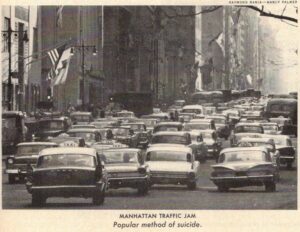
This article indicates that by the end of the 1960’s there was an increasing concern about the quality of air in cities. We had a lot of big cars in big cities and scientists were interested in finding out what the effects may be from breathing in all that vehicle exhaust.
When our cars burn fuel and send exhaust out through the tail pipe, carbon monoxide (CO) is expelled into the environment. CO is a toxic gas that we can’t see or smell, so it can be concerning to think that many CO sources are constantly filling our streets. How much is toxic? What are the effects?
TIME reported in 1970 that the National Academy of Sciences determined that CO becomes dangerous when it reaches ten parts per million parts of air (ppm). This dangerous level was reportedly not uncommon in a 1970’s city. This fact may seem alarming because we have only increased the size of our cities and the number of vehicles on the road over the past fifty years. However, it is more complex than simply associating city size to CO levels. There is other more recent research available that suggests CO levels are generally not elevated to 10 ppm in most cities. High levels seem to be situational and may highlight a need for regional detection systems.
In 1970 scientists were reporting that harmful levels of CO were especially concerning to pregnant women, sufferers of bronchitis, emphysema and chronic heart disease. Some scientists were even concerned about the carbon monoxide in cigarettes. They believe that it may explain why women who smoke during pregnancy have smaller babies.
This article also implies that these findings are bad news for some motorists in smoggy areas. It is alleged that under certain conditions a driver’s perception is dangerously impaired when CO levels are elevated in their blood. Referencing some CO level charts online it looks like it would probably take exposure of about 150-300 ppm for hours to cause the stated effects. I’m not a scientist, but if this is correct, then CO related impaired driving is likely a very rare situation.
1970 Oldsmobile Delta 88 Royale
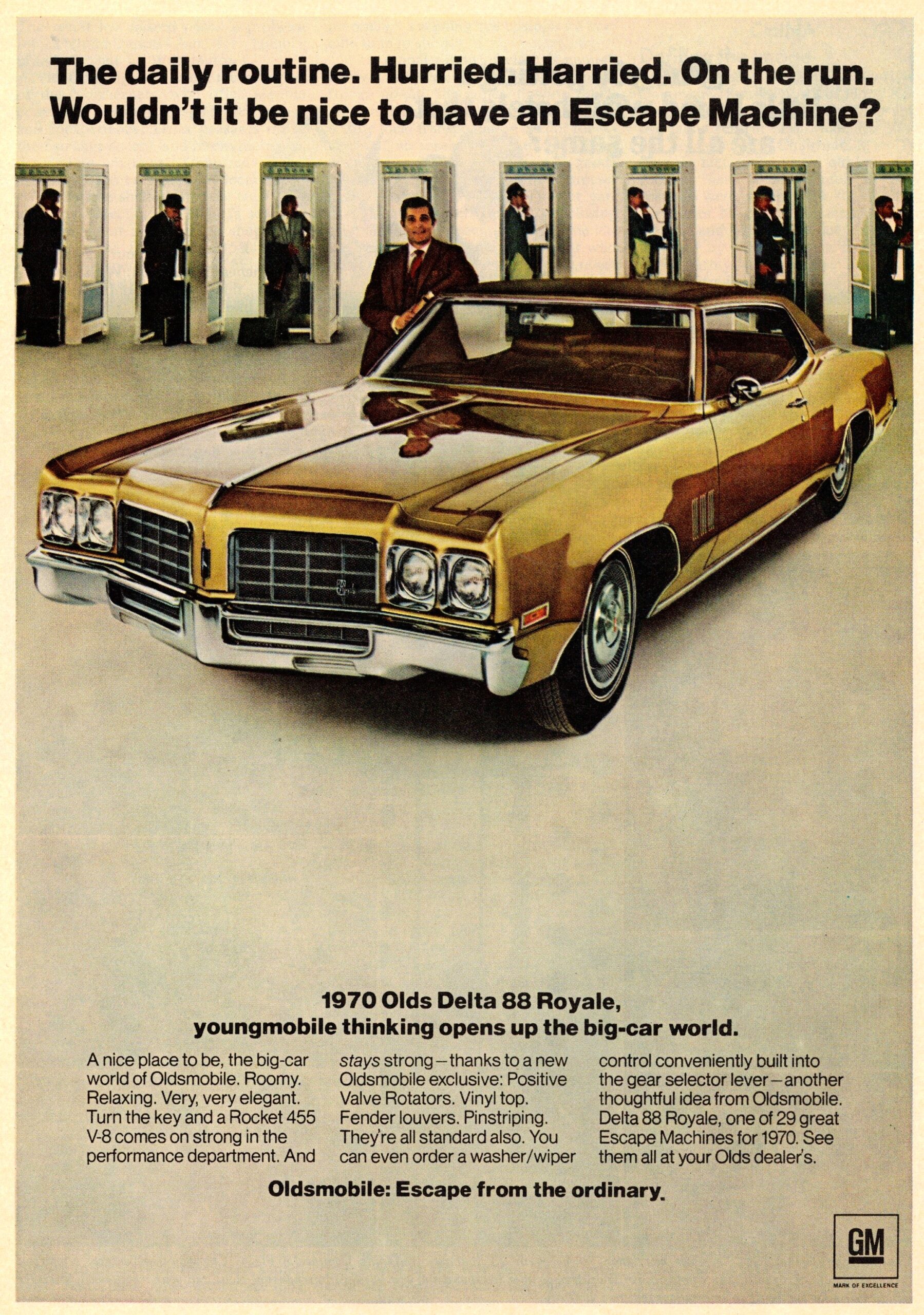
This year’s Oldsmobile Delta 88 Royale was very similar to the 1969 model. It did have a change to the front that saw the grill no longer extend around the headlights. Also, you could get a lower dash mounted 8-track player included as an extra.
Kansas City Chiefs Win the Superbowl!
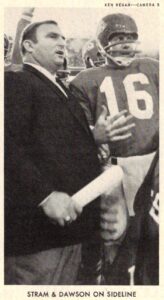
It looks like the Kansas City Chiefs were dominant in 1970 too! They faced the Minnesota Vikings in the Superbowl and came out on top with a 23-7 victory. The Vikings had averaged 27 points per game during the season, but in this contest, they weren’t able to cross the Vikings 40-yard line until the third quarter.
In 1970 the game of football was rapidly changing. Players were getting bigger and plays were becoming more and more complex. The Chiefs thoroughly embraced both aspects of this change. Their defensive front four were the heaviest in football with 270-lbs Aaron Brown leading. A glance at the teams fielded now and I suspect this growth in player size has continued.
Overall, it was reported in this article that the Chiefs outran, outpassed, outhustled and outthought the Vikings. As a reward for their efforts, each player received $15,000.
The Tie-dye Movement in High Fashion
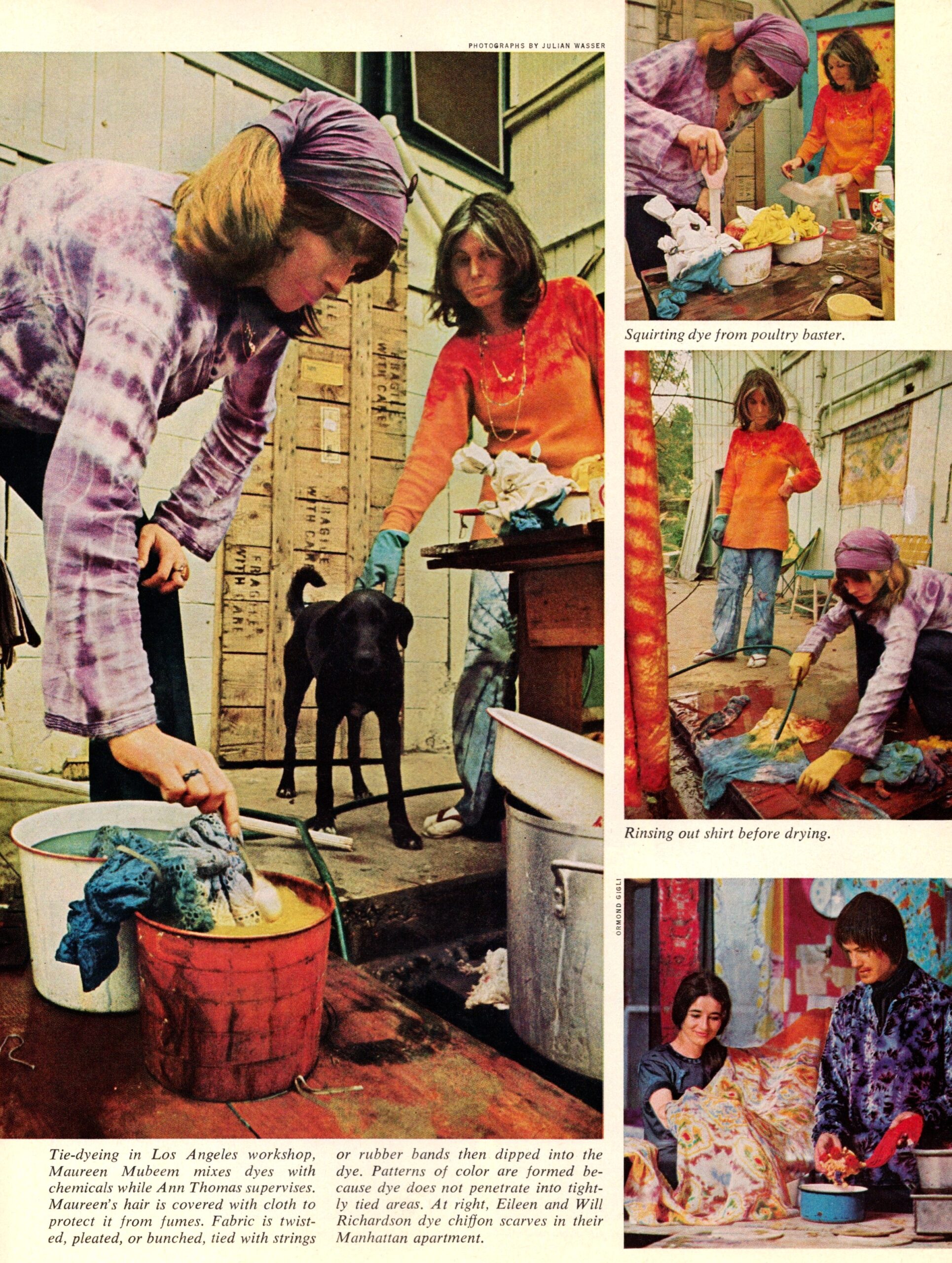
Some of us may remember making our own tie-dye creations. I have a faint memory of being guided through the process as a kid. For those who don’t know, tie-dye involves knotting clothing and dipping it into different color dyes to produce unique colorful patterns. Apparently, the art of tie-dye comes from India and is actually called bandhnu.
The trend that existed in 1970 was started among the flower children of California. Tie-dye was emerging as popular movement in high fashion. Young designer Halston created a lot of his newest collection using tie-dyes. He even included a group of tie-dyed slouch hats. Halston said that he loves the medium’s “limp, sensuous quality,” and “The beauty of it is that no two pieces are alike and anybody can wear it—young and not so young.”
In Hollywood the demand for quality tie-dye workmanship outpaced the supply. Tie-dye Annie can be seen in the image above working from her Hollywood hills semicommune. Anne was one of the tie-dye artists in high demand by the Hollywood elite. She could have commercialized her work, but instead produced specifically for an exclusive list of friends. These friends included the Rolling Stones, the cast of The Committee, Cass Elliott, Hair Producer Michael Butler and more.
M.A.S.H. on the Big Screen
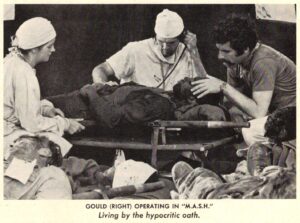
Before Alan Alda came into our homes as Captain Benjamin Franklin “Hawkeye” Pierce, M.A.S.H. was on the big screen starring Donald Sutherland and Elliott Gould.
M.A.S.H the movie became one of the biggest hits of the early 1970’s an some consider it among the best films ever made. It received five academy award nominations and won for Best Adapted Screenplay.
In 1996, it was included in the annual selection of 25 motion pictures added to the National Film Registry of the Library of Congress being deemed “culturally, historically, or aesthetically significant” and recommended for preservation. The Academy Film Archive preserved M.A.S.H in 2000.
American Troops in Viet Nam
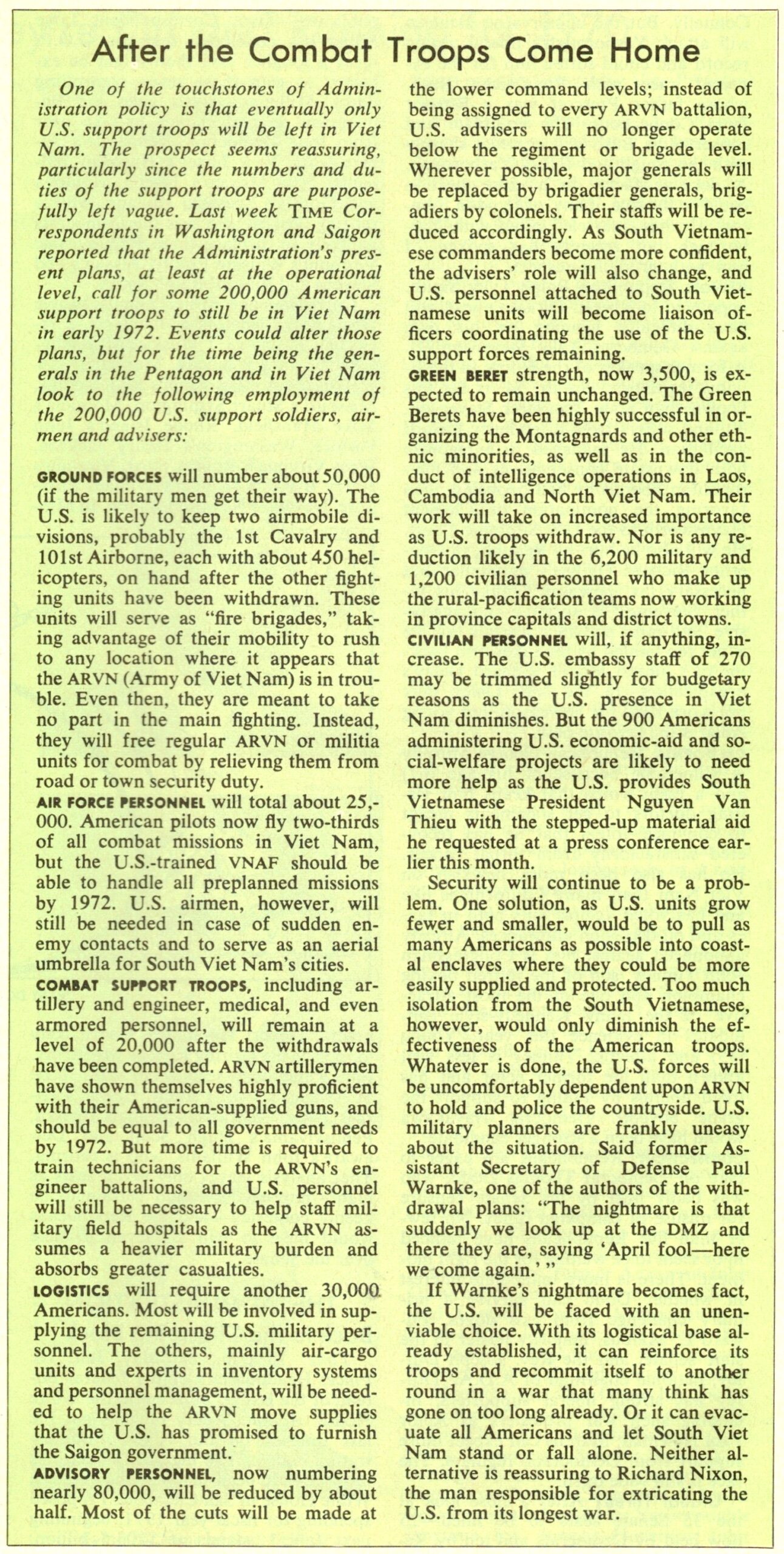
Wrap up
This is just a sampling of the articles within the January 26, 1970 issue of TIME magazine, there is so much more interesting information to explore within. Come check out our inventory at PFTP Antiques if you want to purchase this magazine, or to see what else we have to offer.
We would love to here from our readers about their own memories from this time. What do you remember about the events covered? How does it make you feel when thinking about the progress or lack of progress that has been made since January 26, 1970?
Next week we are going to see what was going on in the issue of TIME magazine from February 2, 1948.
